If you’re as enthusiastic about the holiday season as I am, you probably like to decorate your Christmas tree early, and that means bringing home a live tree soon after Thanksgiving and hoping it lasts for several weeks.
If you’re not diligent at the start of the season, however, you could end up with more fallen pine needles than presents under the tree by Christmas Day.
There are a number of tricks to make a Christmas tree last longer, and this goes for a tree picked up at the local tree lot, a tree harvested from a Christmas tree farm, or a tree cut down in the forest (which my family does in Oregon every year as a beloved tradition).
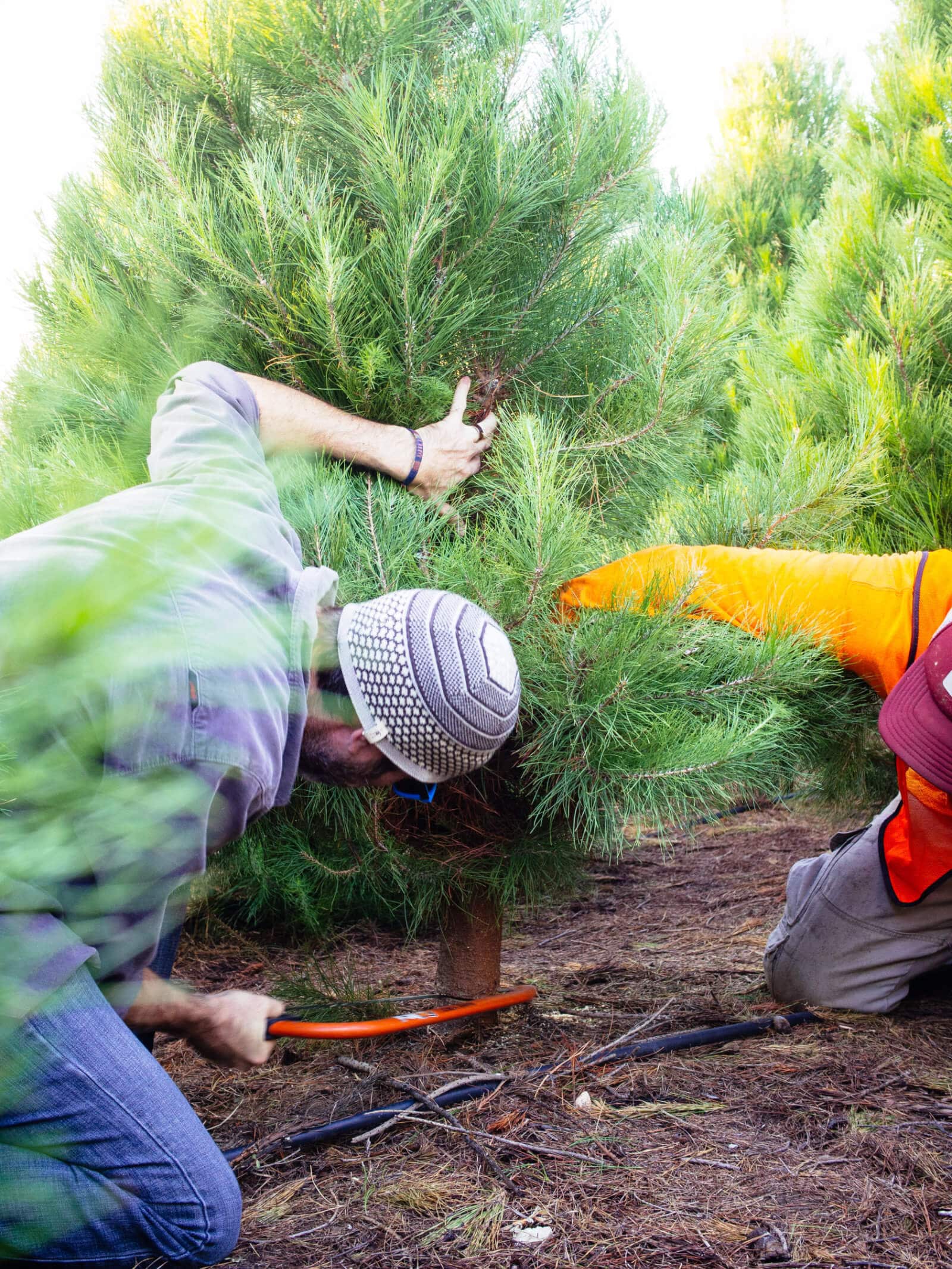
But none of the tricks I share below involve the advice you often hear for extending the bloom of cut flowers, like cutting the bottom at an angle or adding sugar (or molasses, aspirin, commercial preservatives, or other unnecessary additives) to the water.
In fact, the only things you’ll need to ensure a nice, long life for your tree is a clean cut and plenty of water.
Don’t believe me? Read on.
Here are the exact steps I take every year to keep our Christmas tree looking beautiful and smelling fresh all month long (and even past the New Year).
And if you brought home a living tree instead, learn how to keep your potted Christmas tree healthy so you can plant it in your yard afterward!
Disclosure: If you shop from my article or make a purchase through one of my links, I may receive commissions on some of the products I recommend.
How to make a Christmas tree last longer
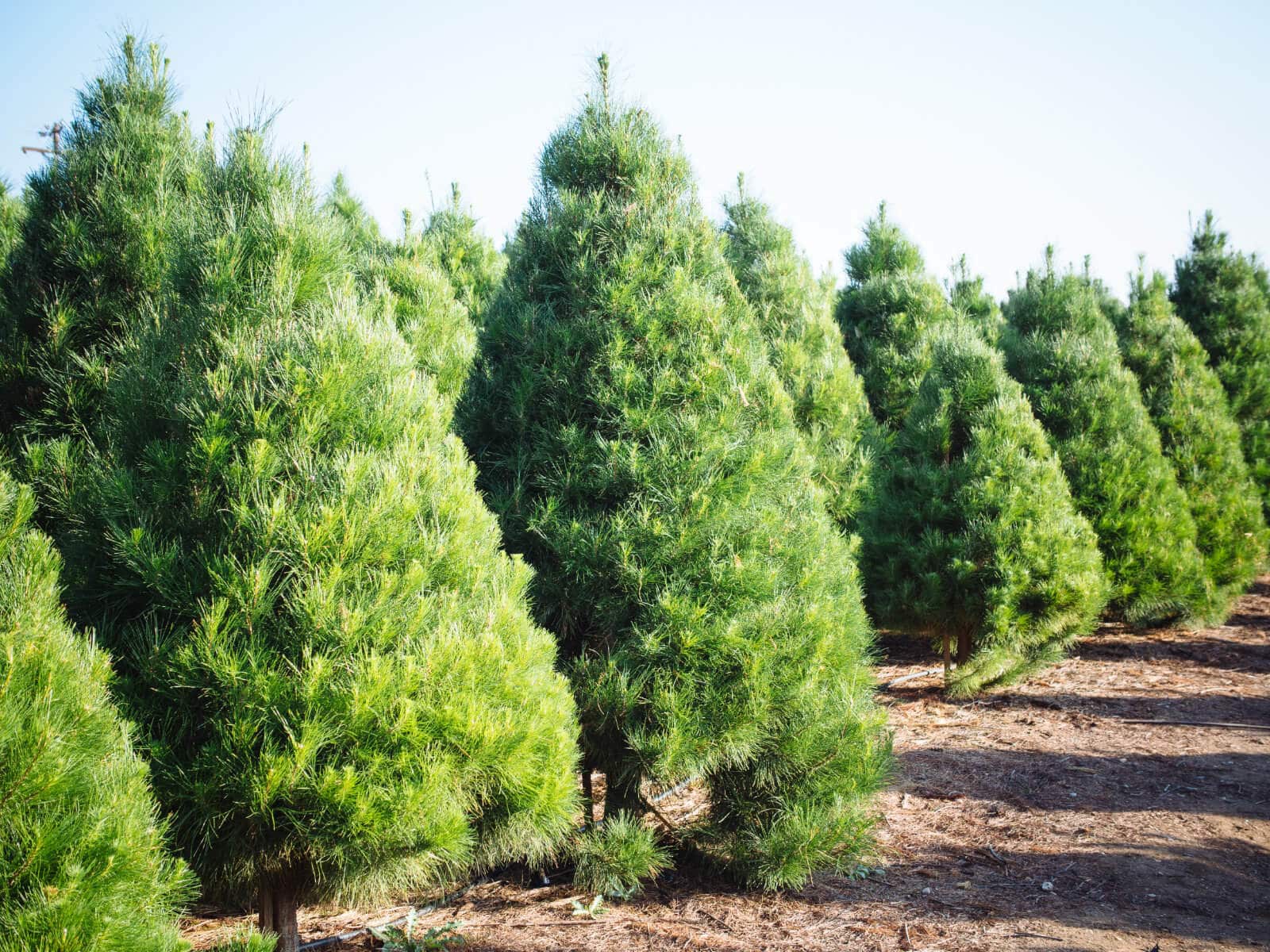
1. Start with a healthy, vibrant tree.
This is especially important if you’re buying a specimen from a tree lot, as the tree may have been cut a couple weeks prior and transported a long distance to reach the vendor. Don’t be afraid to ask the vendor where the trees came from and how recently they were harvested.
Before bringing a tree home, run your fingers along the branches and look for soft, flexible needles that have a rich, deep green color.
Dried-out trees will often have a bleached or pale olive-colored appearance. Check how many needles fall off right away—if it’s a lot, it’s a good indication that the tree is not as fresh as it should be. Give the tree a good shake and watch for an excessive amount of needles that fall, as well as signs of thinning or browning areas.
Related: Why Inner Conifer Needles Turn Yellow or Brown in Fall: An Evergreen Anomaly
If the tree is already starting to dry out and has stiff, brittle needles, it won’t take up as much water, and a warm, cozy home will only exacerbate the problem.
Weight also matters: a heavy tree means it’s retained a lot of water, helping it stay fresher longer.
If you’re cutting your own tree, try to wait for a few hard frosts to happen first. This sends evergreen species into a state of dormancy so they’re hardened and ready for winter. Their needles form a heavy, waxy coating called cutin to help prevent moisture loss, and they’re less likely to react to sunlight and warm indoor temperatures.
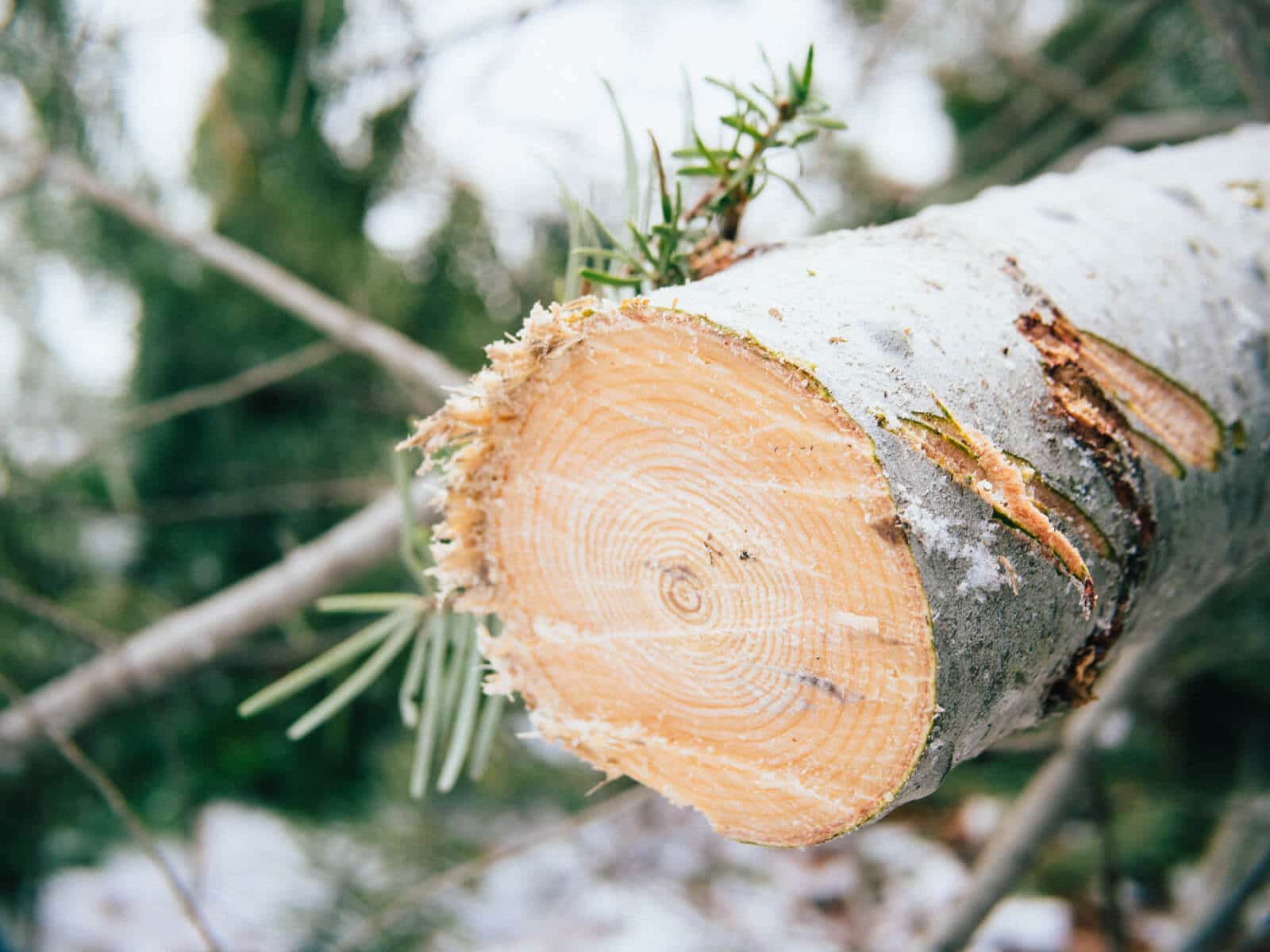
2. Give the tree a clean, straight cut across the bottom.
Chopping down your own tree ensures you have the freshest cut possible, assuming you don’t live more than a couple hours away.
This is because it takes three to four hours for a seal of dried sap to form over the cut trunk, thereby hindering its ability to absorb water. It’s most common in non-dormant trees and those that sit out in the sun for a while.
If you’re buying a tree from a tree lot, ask the vendor to make a fresh cut for you by slicing off a thin disk of wood from the trunk. This is ideal if you’ll be placing your tree in water within 45 minutes of the cut.
Otherwise, make the cut yourself at home by sawing an inch off the bottom in a straight line (no angled or “V” cuts necessary).
You should make a fresh cut even if you cut your own tree just a few hours ago.
Why? Because when a tree is first cut, air gets into the plant tissues and disrupts the tree’s ability to absorb water. Cutting the trunk again “primes” the tree, so to speak, so it can hydrate properly.
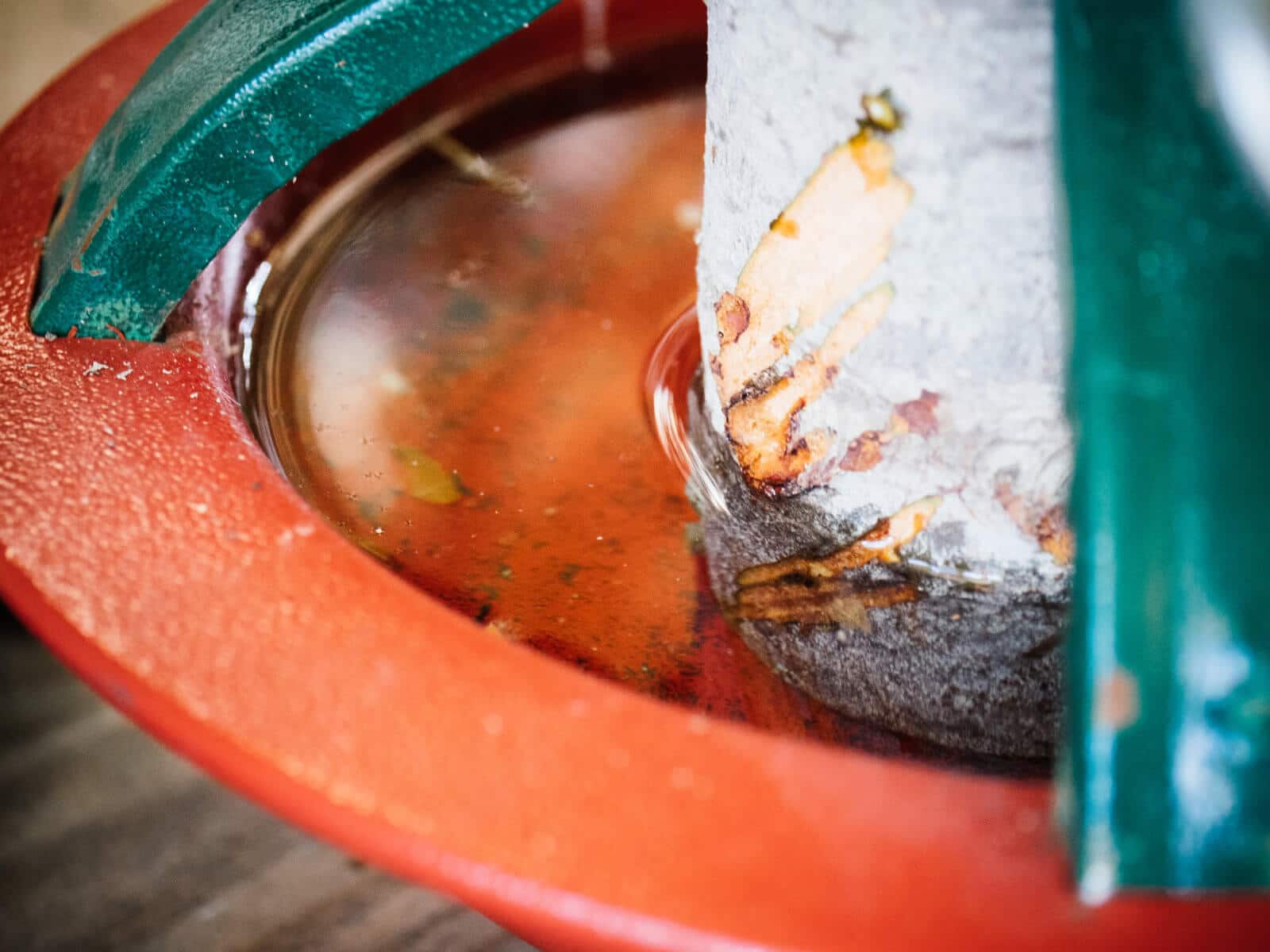
3. Get the tree in water as soon as you come home.
The drive home on the roof of your car or the bed of your truck can start to dry out even the freshest tree to the point where it needs a drink of water immediately.
If you haven’t cleared space in your home for the tree yet, place the trunk in a large bucket of water in a cool, shaded, sheltered spot like an unheated garage (or a covered porch, if it doesn’t get below freezing in your area).
Trees can absorb as much as a gallon of water in the first 24 hours, so it’s crucial that your tree stays well hydrated.
As soon as you bring your tree indoors, set it up in a sturdy tree stand with a generous water reservoir that holds at least a gallon of water. (I swear by this tree stand!)
Quick tip: Don’t decorate your tree until you’re sure it’s taking up water properly. If the water reservoir is still relatively full the next day, make a new cut or (assuming you purchased it from a tree lot) return the tree for a different one.
Use a stand that’s properly sized for your tree, as you want to avoid carving off the bark to fit the stand—it’s those outer layers that help the tree absorb the most water. Without them, your tree will dry out sooner.
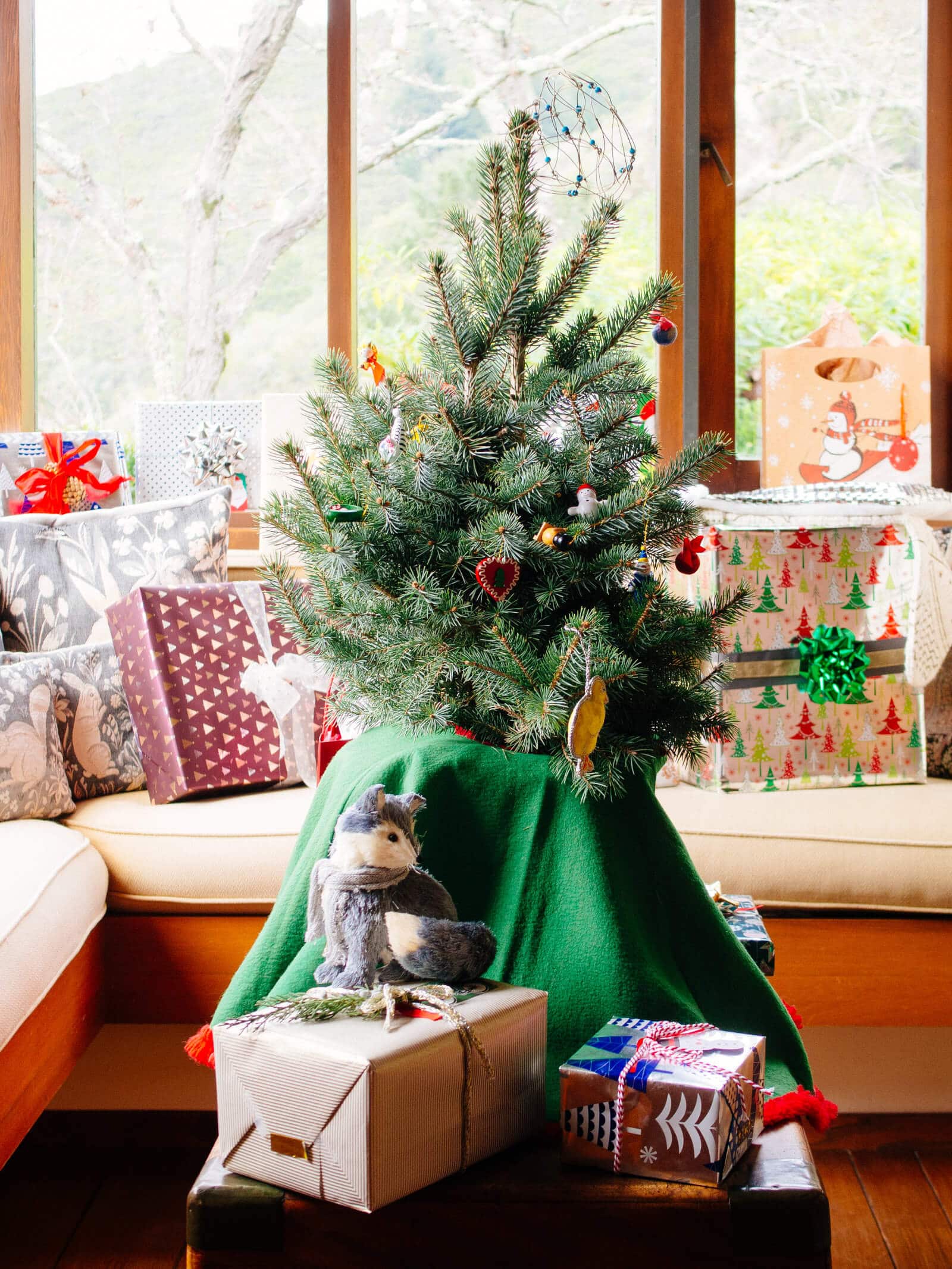
4. Keep it cool.
As romantic as the idea of a beautifully lit Christmas tree by the fireplace is (you know, so Santa has quick access), it’s actually not the most ideal place to keep a tree.
Heat sources like fireplaces, wood stoves, space heaters, and radiators often dry out a tree much faster than you can water it, so it’s best to locate your tree away from heating apparatuses and heating vents, and out of direct sunlight.
If you love having your tree in front of a window, try to avoid a south-facing window (or draw the blinds or curtains during the day when the sun is most intense).
The warmer your home is, the more your tree will take up water, so consider lowering the thermostat to slow the drying process.
If you live in a particularly dry climate, it may also help to run a room humidifier near the tree to keep the needles fresher longer.
Disclosure: If you shop from my article or make a purchase through one of my links, I may receive commissions on some of the products I recommend.
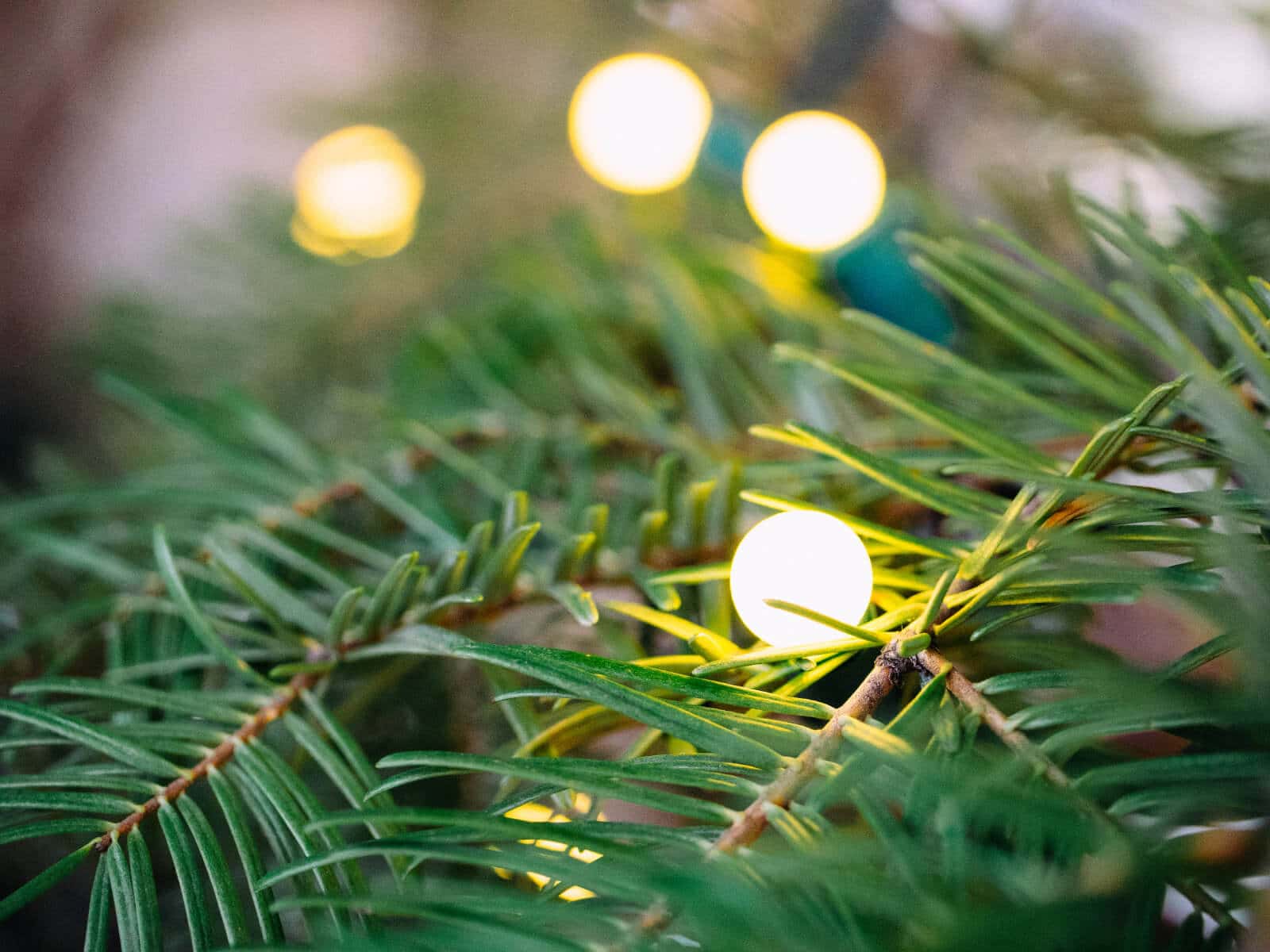
5. Opt for LED lights.
Believe it or not, the type of Christmas light you decorate your tree with can affect how long your tree lasts. Should you go incandescent or LED? Well, here’s the thing…
The new school of LED holiday lights emit very little heat, which keeps your tree from drying out too quickly and also reduces the risk of fire.
They’re inexpensive, energy efficient, don’t burn out, and last a long time, and most modern LED lights come in a “warm white” glow that mimics incandescent lights. (My favorites are these sphere lights, which have a sort of retro look to them.)
For all these reasons, it’s worth replacing your traditional light strands with LED lights, or saving those hot-burning incandescent bulbs for your windows instead.
You can find tree toppers lit with LED lights, too. Many of them are made to connect to your LED light strands, so you don’t have to deal with extra cords or batteries.
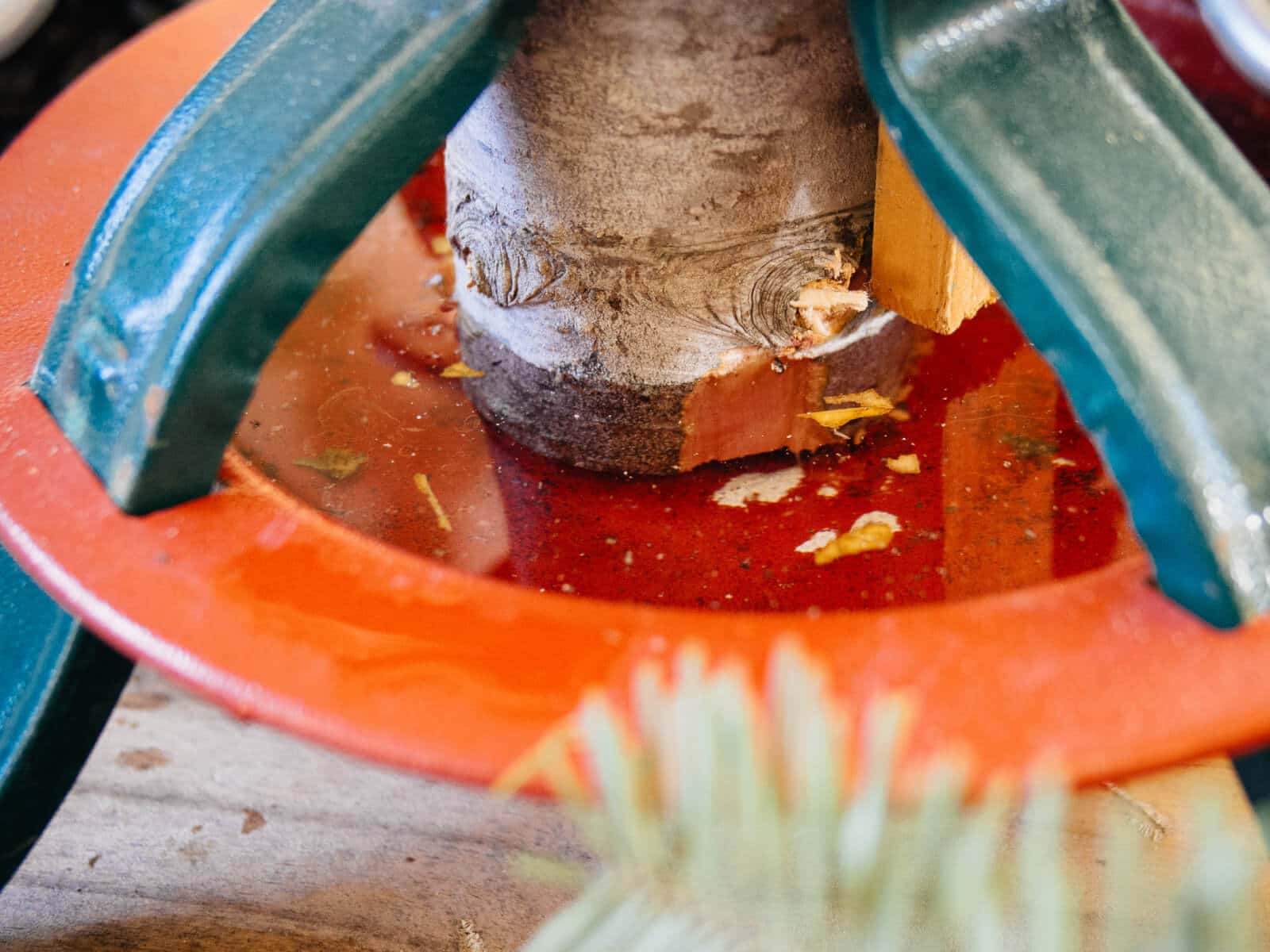
6. Check the water level every day.
Trees suck up a vast amount of water, so don’t be surprised if you find that you need to top off your tree stand daily if you have a larger tree.
Keep at least 2 inches of the trunk submerged in plain, clean water at all times to prevent sap from forming over the base. (It’ll be much harder to make a fresh cut again if your tree’s already decorated.)
Remember that sometimes there will still be water in the stand, but you won’t realize that the water level has dropped below the base of the tree.
In general, a tree can absorb up to a quart of water per day for every inch of its diameter, especially in the first week.
This is one of the reasons a properly sized tree stand is helpful. If your tree trunk is 5 inches in diameter, get a tree stand that holds at least 5 quarts of water so you don’t have to refill it twice or more each day to keep the needles green and supple.
(See my favorites, like this Tree Genie Deluxe, in the source list below.)

7. Recycle your Christmas tree in the garden.
With proper care, a typical evergreen tree should last four to five weeks before it dries out too much. After that, most people dispose of it through a local tree recycling program.
But, you can give your tree a second life in the garden and have everything come full circle.
Try cutting the branches into smaller pieces and adding them to your compost pile. Since organic brown matter (carbon) is harder to come by in winter, they’re perfect for balancing all the green matter (nitrogen) that come from your kitchen scraps. Or, run the trunk and branches through a wood chipper to make mulch for your planters and paths.
An old Christmas tree also makes a good base for a new hugelkultur bed, a type of lasagna garden that’s one of my favorite lazy gardening techniques.
If you have perennial garden beds that need mulching, you can strip the tree of its branches and place them around your plants and shrubs. Leaving the branches long like this will create a nice, thick mat of mulch for the remainder of the season.
For the crafty folks, you can also slice the trunk into thin rounds to use as coasters, place cards, gift tags, and other fun projects.
Need more inspiration? Here are 10 clever ideas for repurposing an old Christmas tree. You’ll never wonder what to do with a dead tree again!
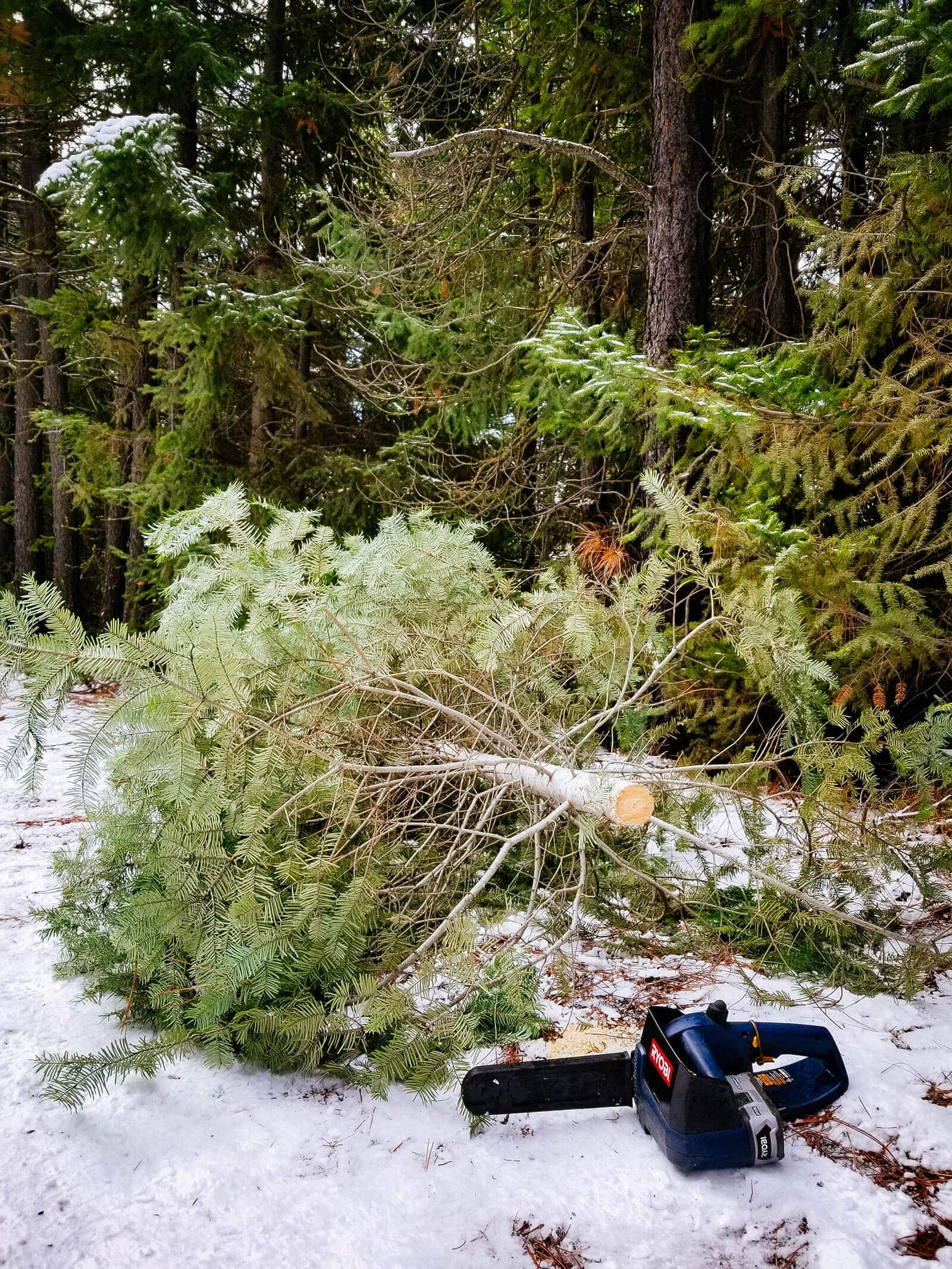
Common questions about keeping Christmas trees fresh
How often should you water a Christmas tree?
Refill the water reservoir once a day, or invest in an extra large tree stand that only needs to be filled once or twice. (This is my favorite stand, and it’s a burly one too—you won’t have to worry about your tree toppling over. It’s also a cinch to get your tree upright. I own it and love it.)
The first week is the most crucial period for a Christmas tree’s survival—it’s when the tree takes up the most water, so keeping the water reservoir in your tree stand topped off is very important.
After a week or so, the tree will respond to the cut on its trunk by oozing resin, which naturally seals the “wound.” At that point, it won’t take up as much water but still needs it to retain moisture in the needles.
Should you add anything to Christmas tree water?
There’s some debate about whether adding any kind of preservative to the water (like sugar, corn syrup, aspirin, or even vodka) can keep a Christmas tree fresher, but experts agree that plain, clean water is best.
Does drilling holes in a Christmas tree help?
Contrary to what your grandpa may have told you, never drill holes in a Christmas tree trunk, thinking it will help the tree take up more water.
All it needs is a clean, straight cut when you bring it home, and a good long soak in a 5-gallon bucket of water (if you aren’t able to get it in the tree stand right away).
How long does a Christmas tree last?
In general, a freshly cut Christmas tree will last four to five weeks from the time you cut it to the time the tree becomes so dry that it’s a fire hazard.
But if the tree is kept in ideal conditions (away from heaters and south-facing windows, and watered religiously), it could actually stretch into a sixth week. Just be sure to keep a close eye on the needles and how much they drop each day.
On the other hand, trees purchased from Christmas tree lots may only last three to four weeks, depending on when they were harvested.
When buying from a retail lot, ask the vendor when he received his shipment of trees. Some vendors only receive shipments at the beginning of the season, while others receive several shipments throughout the season.
If the tree arrived soon after shipment, it stands a better chance of staying fresher longer, since it was cut more recently.
What types of Christmas trees last the longest?
According to a study by the University of Wisconsin-Stevens Point, Fraser fir is the best variety in terms of water uptake and needle retention, followed by balsam fir, Scotch pine, and Black Hills spruce (a variant of white spruce).
Can you bring a dying Christmas tree back to life?
The best way to revive a struggling Christmas tree is to give it more water. Always keep the bottom 2 inches of the trunk submerged in clean water, even if it means you have to refill the water reservoir in your tree stand daily.
You can also keep a Christmas tree green and supple by lowering the thermostat in your home (the cooler air helps it stay fresher longer) or moving it away from a large window that gets direct sun all day. Since heat causes needles to dry out more quickly, try to avoid placing your tree too close to a fireplace, wood stove, or heating vent.
Recommended products for Christmas tree cutting and trimming:
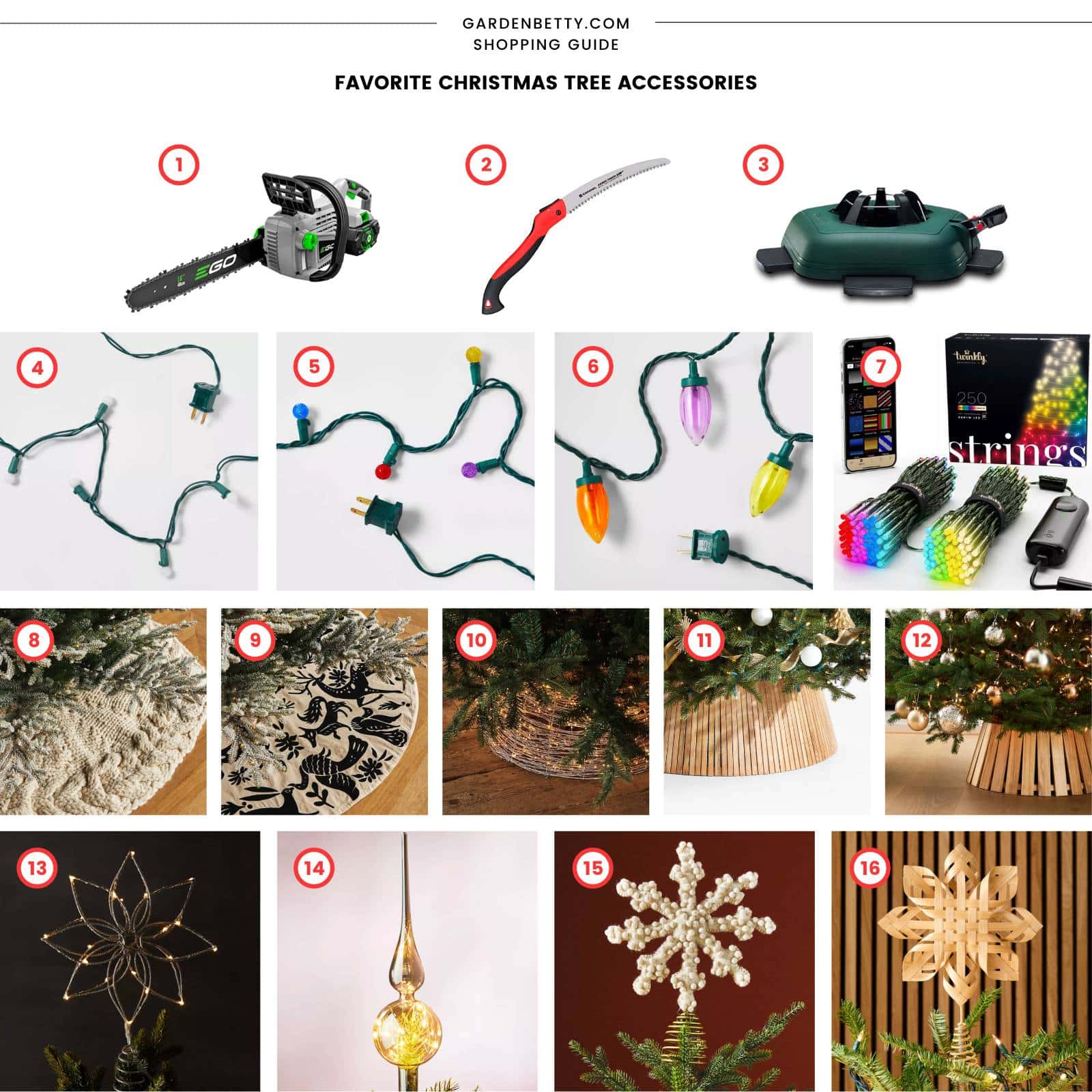
1. EGO Power+ 16-Inch Cordless Chainsaw | 2. Corona RazorTooth Folding Pruning Saw | 3. Krinner’s Tree Genie Deluxe | 4. Wondershop LED Smooth Sphere Christmas String Lights | 5. Wondershop LED Faceted Sphere Christmas String Lights | 6. Wondershop LED C9 Super Bright String Lights | 7. Twinkly App-Controlled LED Smart String Lights | 8. Knit Wool Tree Skirt | 9. Embroidered Forest Tree Skirt | 10. Stargazer LED Rattan Vine Tree Skirt | 11. Skei Wood Natural Tree Collar | 12. Slated Wood Tree Collar | 13. Pre-Lit LED Flower Tree Topper | 14. Pre-Lit LED Glass Topper | 15. Holly Pommed Snowflake Tree Topper | 16. Marimekko Woven Tree Topper
This post updated from an article that originally appeared on December 5, 2018.
View the Web Story on how to make a Christmas tree last longer.


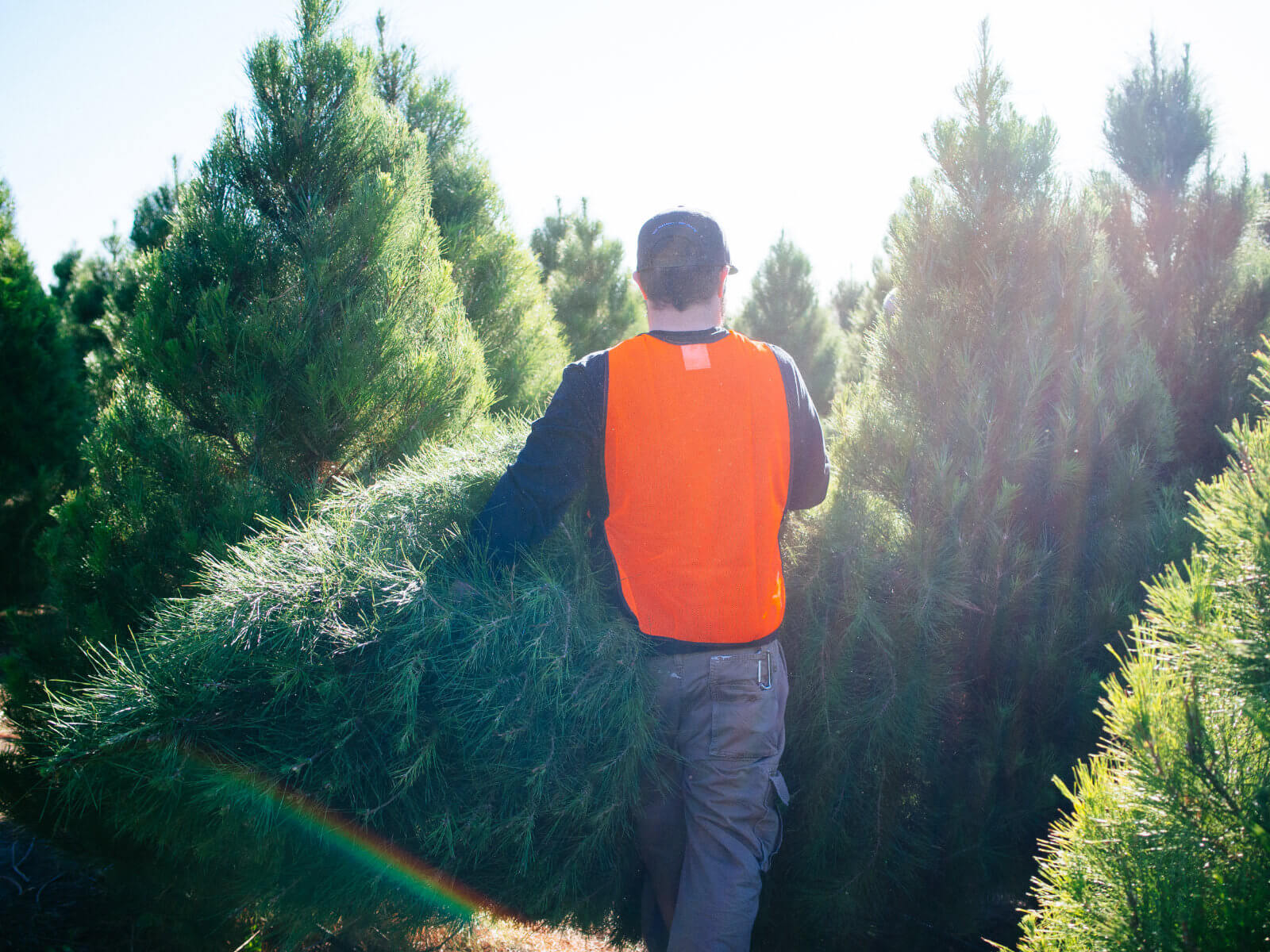













I bought my Christmas Tree from the store and they didn’t keep the trees nice and trimmed so I have branches all over they look very uneven. I’m just wondering, will my Christmas tree die if I trim the ends off to even them out?
This is great help! Thank you! I learned so much.
I also just read another tip from a christmas tree farmer who said it’s helpful to water with VERY HOT WATER (she uses water run through the coffee pot) for the first few days – it helps loosen the sap to get it moving so it sucks up water better.
I LOVE THAT TREE STAND. Gonna get it.
Thanks for the article Linda, some awesome tips for the festive season. Make sure everyone who is DIYing their Christmas trees this year do so with safety as a number one priority!
this is the best article I have read and I have read a ton it is to the point not over the top with junk great tips great advice even great links thank you
I love your site, but it didn’t tell me the one thing I was looking for: Does it matter what kind of saw I use to make the fresh cut at the bottom? You display the cordless chainsaw but also the pruning saw. I don’t have a pruning saw, and my bow saws are rusty. I have a dandy, little chainsaw; but, would using that mess up my tree’s ability to suck up water? Thank you, Linda! You’re great!
Tump 2024
I love tips like this to help make our Christmas trees last longer!
How does Composting a used tree make it last longer?